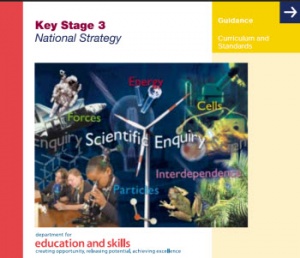Models in Science: Difference between revisions
SimonKnight (talk | contribs) No edit summary |
m (Fixing tagging, as well as cross-curric, vocabulary, distance learning, share practice, DfE, DfEScience templates) |
||
| Line 22: | Line 22: | ||
}} | }} | ||
[[Category:Secondary]] [[Category:Science]][[Category:Teacher Education]] [[Category:External Resource]] | [[Category:Secondary]] [[Category:Science]][[Category:Teacher Education]] [[Category:External Resource]] | ||
{{ | {{DfES Science Ped Pack}} | ||
Revision as of 08:44, 28 September 2012
About. Models offer a way to advance understanding in science. They help students to 'see' a beating heart or food digestion; the solar system or an ecosystem and they help by visualising abstract ideas such as particle theory or energy transfer. This 3-page guide, 'harvested' from a larger DfES document, begins to classify the models and analogies used around age 13.
Pedagogical content. An opportunity for teachers to discuss the use of modelling(ta) and visualisation(ta) in Key stage 3 science (edit)
| Resource details | |
| Title | Models in Science |
| Topic | [[Topics/Modelling|Modelling]] |
| Teaching approach | [[Teaching Approaches/Visualisation|Visualisation]], [[Teaching Approaches/Modelling|Modelling]] |
| Learning Objectives | to know examples of models used in science lessons. |
| Format / structure | .doc |
| Subject | [[Resources/Teacher Education|Teacher Education]], [[Resources/Science|Science]] |
| Age of students / grade | [[Resources/11-14 years|11-14 years]], [[Resources/Secondary|Secondary]], [[Resources/Higher|Higher]], [[Resources/KS3|KS3]]
|
| Related ORBIT Wiki Resources | See other DfEScience(i) resources |
| Files and resources to view and download | File:Models in Science.doc available in WikiText format here
|


